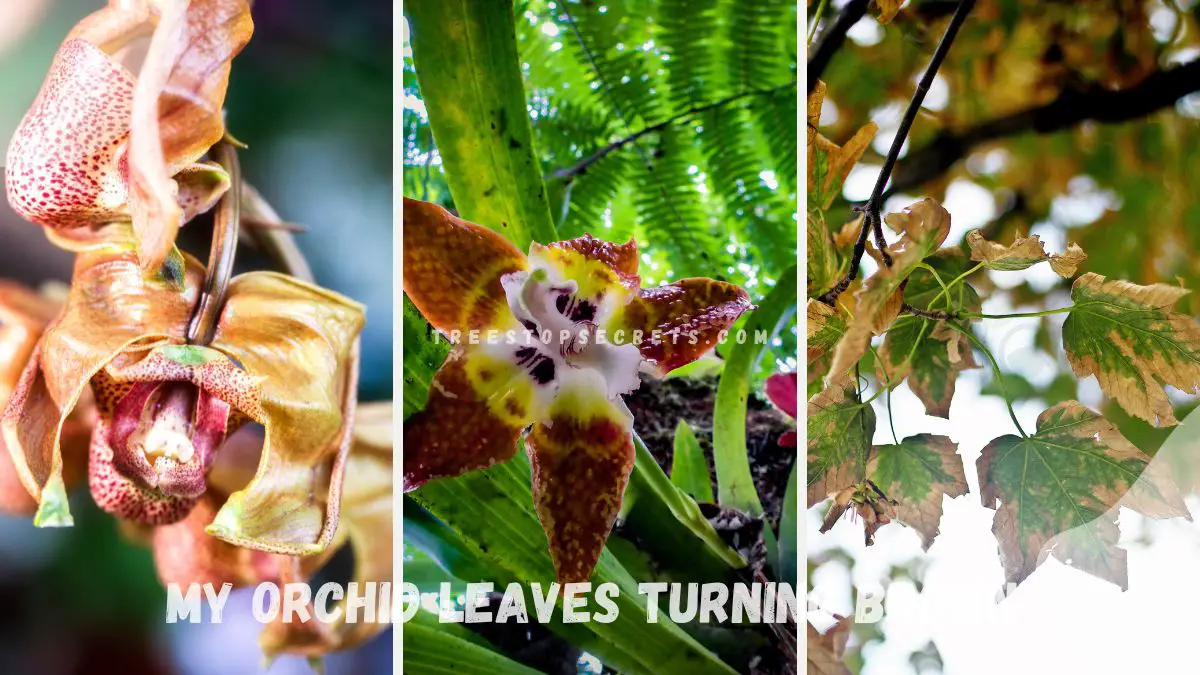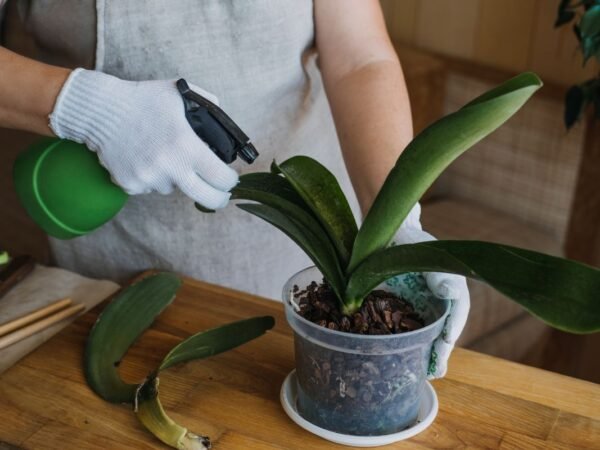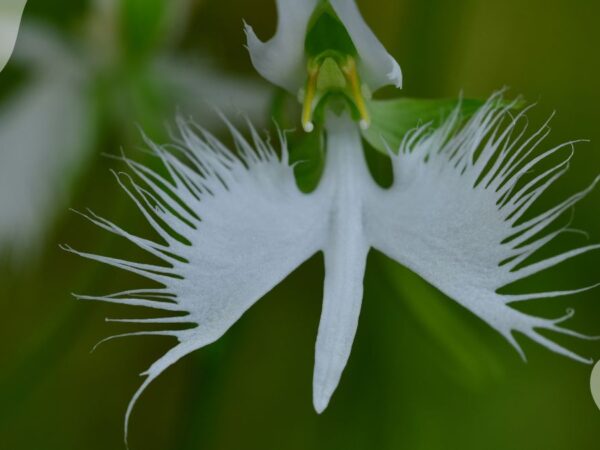Discovering your orchid leaves turning brown can be concerning for any plant parent. This common issue can stem from various factors, including overwatering, inadequate light, or even pests. Understanding the underlying causes and implementing the right solutions promptly is crucial to revive your orchid's health and vibrancy.
Whether you are a seasoned orchid enthusiast or a beginner looking to enhance your plant care skills, this guide will provide you with practical tips and insights to address the browning of your orchid leaves effectively. By following these strategies, you can ensure that your orchid thrives and continues to grace your space with its beauty.
Key Takeaways
- Recognize unhealthy orchid leaves: Look for signs of browning to identify potential issues early on.
- Address common reasons for browning: Understand factors like light, temperature, and humidity that can impact orchid leaf health.
- Consider environmental impacts: Ensure your orchids are in a suitable environment to prevent leaf browning.
- Focus on nutritional factors: Provide proper nutrients to maintain healthy orchid leaves.
- Implement correct watering techniques: Over or under-watering can lead to leaf discoloration; find the right balance.
- Protect orchids from damage: Shield your plants from physical harm and stress to prevent browning issues.
Recognizing Unhealthy Orchid Leaves
Identifying Browning
Orchid leaves turning brown can indicate various issues with the plant's health. Observe if the green color fades, turning into a shade of brown. Look for spots or patterns on the leaves, which could signify diseases or pests. check for any changes in the texture of the leaves, such as wilting or softening.
Reading Leaves Correctly
Understanding the reasons behind orchid leaf browning is essential for proper care. Recognize that leaf color changes serve as indicators of underlying problems. Differentiate between normal aging processes and abnormal browning caused by stress or diseases. By learning to read the leaves correctly, you can identify early signs of stress and take necessary actions promptly.
Wrinkled Leaves Explained
Wrinkled orchid leaves are often a result of dehydration or inadequate care. Identify potential causes behind wrinkling, such as underwatering or low humidity levels. Understand how dehydration affects the turgidity of leaves, leading to a wrinkled appearance. To address wrinkled leaves effectively, ensure your orchid receives adequate water, humidity, and proper nutrition.
Common Reasons for Browning
Watering Mistakes
Overwatering is a common reason for orchid leaf browning. It's crucial to avoid excessive watering to maintain leaf health. Underwatering can also lead to leaf issues, so finding the right balance is key. Adjust your watering frequency based on the specific type of orchid and the surrounding environment.
Water Quality Issues
Water quality significantly impacts the health of orchid leaves. Using filtered or distilled water can help prevent browning. Keep an eye out for mineral buildup on leaves, which is often caused by poor water quality. Monitoring and addressing these issues promptly can improve leaf condition.
Humidity Importance
Maintaining optimal humidity levels is essential for healthy orchid leaves. Low humidity levels can contribute to leaf browning, so it's crucial to understand and address this issue. Implementing humidity-boosting techniques like misting or using a humidifier can help create a suitable environment for orchids.
Temperature Effects
Temperature fluctuations can have a significant impact on orchid leaves, potentially leading to browning. Protect your orchids from extreme temperature conditions to prevent stress on the leaves. Proper ventilation is essential to regulate temperature and ensure optimal growing conditions for your orchids.
Environmental Impacts on Orchids
Sunlight Needs
To ensure healthy orchids, provide adequate but indirect sunlight to prevent leaf damage. Avoid direct exposure to intense sunlight to prevent leaf sunburn in epiphytes. Adjust light exposure based on specific orchid species and their light requirements.
Cold Damage Prevention
Shield orchids from cold drafts to prevent leaf damage during colder seasons. Ensure appropriate insulation to protect orchids from cold temperatures. Avoid sudden temperature drops that can harm the delicate leaves of orchids.
Ideal Temperature
Maintain consistent and suitable temperatures for optimal orchid growth. Understand the temperature preferences of different orchid varieties to provide the ideal environment for healthy leaf development. Create a stable temperature setting to promote robust leaf growth in orchids.
Nutritional Factors
Fertilizer Use
Using balanced fertilizers is crucial for maintaining healthy orchid leaves. These fertilizers provide the necessary nutrients to support the metabolism of orchids. Follow the recommended fertilizing schedules to ensure your orchids receive adequate nutrition.
Over-fertilizing can harm orchid leaves, causing them to turn brown. It's important to be cautious and avoid excessive fertilizer use. By following proper fertilizing practices, you can promote vibrant and healthy orchid foliage.
- Balanced fertilizers support orchid leaf health
- Recommended fertilizing schedules are essential
- Caution against over-fertilizing to prevent leaf discoloration
Nutrient Deficiency
Recognizing symptoms of nutrient deficiencies in orchid leaves is key to maintaining their health. Common signs include yellowing or browning of leaves. Promptly addressing nutrient deficiencies can prevent further damage to the leaves.
Adjusting fertilizer types can help meet specific nutrient needs of orchids. By identifying and addressing nutrient deficiencies early on, you can ensure that your orchids remain healthy and vibrant.
- Symptoms of nutrient deficiencies should be recognized
- Address deficiencies promptly to prevent leaf damage
- Adjust fertilizer types to meet specific nutrient needs
Watering Techniques for Orchids
Correct Watering
Master the art of proper orchid watering techniques. Avoid overwatering by ensuring that excess water can drain out of the pot. Adjust watering practices based on the type of potting medium used and the environmental conditions.
- Water orchids thoroughly but ensure proper drainage to prevent waterlogging.
- Adjust watering frequency based on factors like humidity levels and temperature.
- Use a well-draining potting mix to prevent water accumulation around the roots.
Over and Underwatering
Identify signs of overwatering and underwatering in orchid leaves. Look for brown, mushy roots as a sign of overwatering, while wrinkled leaves indicate underwatering. Implement corrective measures promptly to avoid further damage.
- Correct overwatering by reducing watering frequency and improving air circulation around the plant.
- Address underwatering by increasing watering frequency gradually and maintaining consistent moisture levels.
- Strike a balance in watering frequency to keep orchid leaves healthy and vibrant.
Protecting Orchids from Damage
Sunscald Protection
Shield orchids from excessive sunlight to prevent sunscald. Provide shade during peak sunlight hours. Use protective covers or screens to reduce sun exposure.
Avoiding Fertilizer Burn
Prevent fertilizer burn by diluting fertilizers properly. Apply fertilizers away from direct contact with orchid leaves. Flush out excess fertilizer salts to avoid leaf damage.
Disease and Pest Management
Fungal Diseases
Fungal diseases can harm orchid leaves, leading to browning. Common fungal infections include leaf spots and blights. Proper ventilation reduces humidity, preventing fungal growth. Sanitation is key to avoiding fungal diseases in orchids.
Implement good hygiene practices to prevent the spread of fungal infections. Early detection is crucial for effective treatment. Treat fungal diseases promptly with suitable fungicides to save the orchids from further damage.
Bacterial Diseases
Watch out for symptoms of bacterial diseases on orchid leaves, such as soft rot and leaf spots. Good hygiene practices, like cleaning tools between plants, help minimize bacterial infections. Using targeted antibacterial treatments is essential for managing bacterial diseases effectively.
Bacterial infections can spread rapidly, so quick action is necessary. Regularly inspect orchids for any signs of bacterial diseases to address them promptly. Applying appropriate antibacterial treatments can halt the progression of the infection.
Pest Combatting
Identify common pests that can harm orchid leaves, such as aphids and spider mites. Natural pest control methods, like introducing beneficial insects, help protect orchids without harming them. Regularly monitoring orchids allows early detection of pest infestations.
Implementing physical barriers, like sticky traps, can prevent pests from reaching orchids. Natural predators, such as ladybugs, can help control pest populations in an eco-friendly manner. Regularly checking for pests ensures timely intervention to safeguard orchids.
Understanding Natural Browning Causes
Aging Factors
Orchid leaves naturally turn brown as they age, a process that is part of the plant's life cycle. As leaves mature, they may lose their green color and develop brown spots. This browning occurs primarily due to senescence, which is the natural aging process in plants. The older leaves are more prone to browning compared to newer growth.
Environmental Influences
Environmental factors such as excessive sunlight or heat exposure can also contribute to orchid leaf browning. When orchids receive too much direct sunlight or are exposed to high temperatures, their leaves can get sunburned, leading to browning. inconsistent watering practices can cause stress to the plant, resulting in leaf discoloration.
Differentiating Between Natural Browning and Disease
It is essential to distinguish between natural leaf browning and signs of disease or pest infestation. Normal aging will cause lower leaves on the orchid to turn brown and eventually die off, making way for new growth. On the other hand, abnormal browning often presents as sudden, widespread discoloration across multiple leaves, indicating an underlying issue.
Tips for Managing Browning Issues
- Ensure your orchid receives adequate but not excessive sunlight.
- Maintain a consistent watering schedule to prevent water stress.
- Monitor the plant closely for any signs of pests or diseases.
- Properly fertilize your orchid to support healthy leaf growth.
- Trim off any severely damaged or diseased leaves to promote overall plant health.
Preventive Measures and Solutions
Ensuring Health
Maintain overall orchid health by providing adequate sunlight, water, and nutrients. Ensure proper ventilation to prevent fungal growth. Check for pests regularly. Consider repotting if necessary.
- Regularly inspect leaves for any signs of discoloration or damage.
- Monitor the humidity levels in the orchid's environment to prevent stress on the plant.
Address any underlying issues affecting orchid well-being promptly to prevent browning leaves. Adjust watering frequency based on the orchid's specific needs.
- Avoid over-fertilizing, as excessive nutrients can lead to leaf discoloration.
- Maintain a consistent temperature range suitable for orchids to thrive.
Create a holistic care routine that includes proper watering, fertilizing, and pruning practices. Use a well-draining potting mix to prevent waterlogging.
Recovery Steps
Take immediate action to revive browning orchid leaves by identifying the root cause of the issue. Trim any severely damaged leaves to encourage new growth.
- Increase humidity levels around the orchid by using a humidifier or placing a tray of water nearby.
- Apply a balanced orchid fertilizer to support leaf recovery and overall plant health.
Implement targeted care strategies such as adjusting light exposure and airflow to promote leaf recovery. Consider using a gentle fungicide if fungal infections are detected.
- Prune away any dead or decaying roots to prevent further damage to the plant.
- Repot the orchid in fresh potting mix if root rot is suspected.
Monitor progress closely by observing new leaf growth and changes in leaf color. Adjust care practices as needed based on the orchid's response to treatment.
Closing Thoughts
By recognizing the signs of unhealthy orchid leaves, understanding the common reasons for browning, and implementing proper care techniques, you can protect your orchids from damage and ensure their well-being. Environmental factors, nutrition, watering practices, and pest management play vital roles in maintaining healthy orchids. Remember to observe your plants closely, provide them with the necessary care, and promptly address any issues that arise to prevent further damage.
Incorporate the preventive measures and solutions discussed in this article to keep your orchids thriving. Your attentiveness and proactive approach will not only enhance the beauty of your plants but also contribute to their longevity. Take charge of your orchids' health today and enjoy a flourishing indoor garden!
Frequently Asked Questions
What are the signs of unhealthy orchid leaves?
Unhealthy orchid leaves may exhibit browning, yellowing, spotting, or wilting. Look for changes in color, texture, or shape as indicators of potential issues with your orchid plant's health.
How can environmental factors impact orchid leaf health?
Environmental factors such as excessive sunlight, improper humidity levels, or extreme temperatures can stress orchids, leading to browning of leaves. Ensure your orchids are placed in a suitable environment to prevent damage.
What role do nutritional factors play in orchid leaf browning?
Nutritional deficiencies or imbalances in essential nutrients like nitrogen, potassium, or magnesium can cause orchid leaves to turn brown. Use a balanced fertilizer specifically formulated for orchids to maintain their health.
What watering techniques should I use to prevent orchid leaf browning?
Water orchids thoroughly but allow the roots to dry out between waterings to prevent root rot and leaf browning. Consider using a well-draining potting mix and avoid overwatering to keep your orchids healthy.
How can I protect my orchids from diseases and pests that cause leaf browning?
Regularly inspect your orchids for signs of pests like spider mites or diseases like fungal infections that can lead to browning leaves. Maintain good air circulation and practice proper sanitation to minimize risks of infestations.
Image Source: Paid image from CANVA




